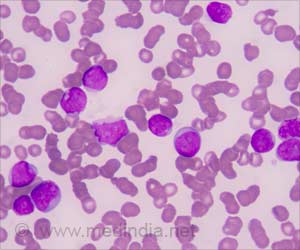But this remnant from medical practice in the Middle Ages may help to relieve stress among its believers, and may have ‘Therapeutic’ placebo effect value, suggest the researchers.
‘The Secret’ has been used for several centuries in Switzerland, particularly in the French speaking part, to staunch blood during and after a procedure. It consists of a healing ‘formula’ or prayer that is intended to mobilize superior forces to help cure the patient.
The ‘formula’, which can be deployed on site or remotely by an initiated ‘Secret Maker’, is a widely practiced and reputed complementary medicine in Switzerland, so much so that it is used in hospitals. But its clinical effectiveness has never been formally evaluated.
Advertisement
In a bid to plug this knowledge gap, the researchers compared bleeding outcomes in 200 people admitted to one tertiary care centre for planned invasive coronary procedures.
These were diagnostic coronary angiography (x-ray imaging of the heart vessels) and/or percutaneous coronary intervention (unclogging of blocked arteries to restore blood flow) between January and July 2022.
Half the patients were randomly assigned to standard care, and half were randomly assigned to standard care plus ‘The Secret’, which was administered by a randomly selected Secret Maker.
The average age of the patients was 68, and nearly three out of four were men. Most (76%) of the entire sample believed that ‘The Secret’ would prevent bleeding, with believers more or less evenly distributed across both groups.
Risk factors for postoperative complications were similar between the two groups, as were the criteria for minor and major bleeding.
Bleeding severity was defined according to Bleeding Academic Research Consortium (BARC) criteria, ranging from 1 (minor) to 5 (major).
Can ‘The Secret’ Stop Bleeding
Bleeding after a procedure occurred in 55 (27.5%) of the patients. Rates were similar in both groups:16% in ‘The Secret’ group vs 14% (BARC 1) in the standard care group; and 12% vs 13% (BARC 2). No patient had a major bleed (BARC 3 and above).
The researchers acknowledge that their study was relatively small and carried out in one hospital. And despite random group allocation, radial artery access for angiography was more often used for patients in the standard care group. This can lower the risk of serious vascular complications and major bleeding.
That The Secret didn’t affect bleeding outcomes for better or worse wasn’t exactly a surprise, say the researchers, but a substantial proportion of patients nevertheless request ‘The Secret’.
“This apparent discrepancy between the measured effects on bleeding and patient demands touches on an aspect that was not addressed by this study, but which can be understood as stress management and wellbeing,” they point out.
“The reduction of stress in the patient who has used a ‘Secret Maker’ has been considered after burns. As such, ‘The Secret’ might allow some neuropsychological conditioning and act as a placebo, as do other beliefs or biofeedback techniques,” they suggest.
‘The Secret’ is a remnant of the Middle Ages, when medicine was practiced by monks or sorcerers, based on one of the miracles reported in the synoptic gospels (Matthew, Mark, Luke) as “Jesus healing the bleeding woman,” they explain.
Despite medical and scientific advances, “Recent enthusiasm for ‘alternative’ medicines and healers, which is particularly intense on social media since the last COVID-19 pandemic started, or the techno-optimism towards global warming, are proof of persistent magical thinking among the general public,” they add.
Source: Eurekalert



